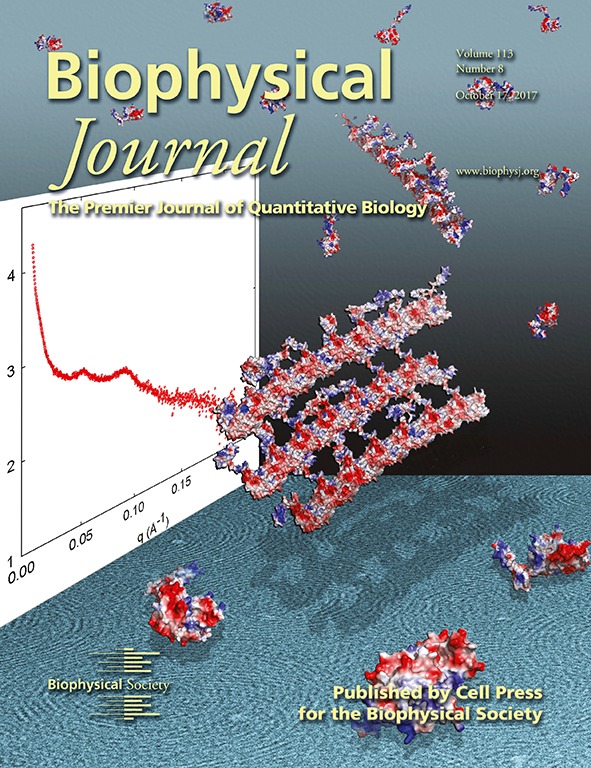
FtsZ is a self-assembling GTPase that controls the cell division machinery in bacteria by forming a mid-cell contractile ring (the Z-ring), which serves as a scaffold recruiting the other proteins involved in the division process. FtsZ monomers polymerize head to tail forming tubulin-like dynamic protofilaments, whose organization in the Z-ring is still an unresolved problem.
The Andreu group at Centro de Investigaciones Biológicas in collaboration with Drs. Llorca and Díaz, and researchers of the Instituto de Química Física Rocasolano have now revealed the nanoscale self-organizing properties of FtsZ assemblies in solution, thought to underlie Z-ring assembly, by combining X-ray scattering, cryo-electron microscopy (at the electron microscopy facility of CIB) and molecular modeling studies.
The work, published in Biophysical Journal, shows that FtsZ forms bundles made of loosely bound filaments of variable length and curvature. Neighbor FtsZ filaments in bundles are laterally spaced with a 7 nm gap in between. In contrast, a closer contact between filament core structures (5 nm) is observed in straight polymers of FtsZ constructs lacking the C-terminal tail, which is known to provide a flexible tether essential for FtsZ functions in cell division. Changing the length of the disordered C-tail modifies the interfilament spacing.
In conclusion, the intrinsically disordered C-tail linker apparently prevents dynamic FtsZ protofilaments in bundles from sticking to one another. According to this model, weak interactions between curved polar FtsZ protofilaments through their the C-tails may facilitate the coherent treadmilling dynamics of membrane-associated FtsZ bundles in reconstituted systems, as well as the recently discovered movement of FtsZ clusters around bacterial Z-rings that is powered by GTP hydrolysis and guides correct septal cell wall synthesis and cell division.
The artistic representation of the proposed organization for FtsZ assemblies has been chosen as cover image for the October 17th issue of Biophysical Journal.
Reference: Self-Organization of FtsZ Polymers in Solution Reveals Spacer Role of the Disordered C-Terminal Tail. Sonia Huecas, Erney Ramírez-Aportela, Albert Vergoñós, Rafael Núñez-Ramírez, Oscar Llorca, J. Fernando Díaz, David Juan-Rodríguez, María A. Oliva, Patricia Castellen, José M. Andreu. Biophysical J. (2017) 113, 8, 1831–1844. DOI: http://dx.doi.org/10.1016/j.bpj.2017.08.046
Link to Biophys J. blog: here

